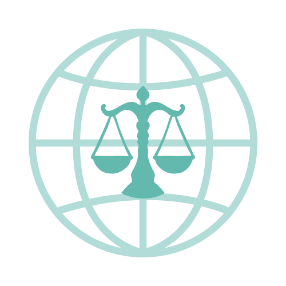Difference between revisions of "Stephanie's Wiki Test Page/About the Tribunals"
Jump to navigation
Jump to search
| (12 intermediate revisions by the same user not shown) | |||
| Line 1: | Line 1: | ||
| − | {{Onboarding-css}}<!-- Source code for the CSS file. Do not remove --> | + | {{Onboarding-css}} |
| + | '''[[:fr:Travailler_au_SCDATA/À_propos_des_tribunaux|FRANÇAIS]]''' | ||
| + | |||
| + | <!-- Source code for the CSS file. Do not remove --> | ||
<div class="nav" role="navigation" id="top"> | <div class="nav" role="navigation" id="top"> | ||
<div class="tabContainer"> | <div class="tabContainer"> | ||
| Line 25: | Line 28: | ||
<h3>Canada Agricultural Review Tribunal (CART)</h3> | <h3>Canada Agricultural Review Tribunal (CART)</h3> | ||
<div class="card-body mw-collapsible mw-collapsed"> | <div class="card-body mw-collapsible mw-collapsed"> | ||
| − | <p>The Canada Agricultural Review Tribunal is an independent tribunal established by the Government of Canada to provide impartial reviews of notices of violation issued by federal agencies regulating agriculture and food.</p> | + | [[Image:CART.png|110px|left]]<p>The Canada Agricultural Review Tribunal is an independent tribunal established by the Government of Canada to provide impartial reviews of notices of violation issued by federal agencies regulating agriculture and food.</p> |
<p>Federal agencies, including the Canadian Food Inspection Agency, the Canada Border Services Agency and the Pest Management Regulatory Agency, use administrative monetary penalties (AMPs) as part of their escalating scale of enforcement providing an expeditious, non-punitive means to promote regulatory compliance.<p>'''Mandate'''<p>In line with its mission, the CART's mandate is to provide independent, fair, cost-effective and timely review of the validity of AMPs issued to any person by a federal agency under the ''Administrative Monetary Penalties Act''. As an independent quasi-judicial body established by Parliament, under the Canada Agricultural Products Act and the AMP Act, the CART maintains an arm's length relationship from Agriculture and Agri-Food Canada, Health Canada, Public Safety Canada and their Ministers. Each member of the CART is appointed for a fixed term and may not be employed in the federal public service.<p>[https://www.cart-crac.gc.ca/index-en.html '''CART website''']<p> | <p>Federal agencies, including the Canadian Food Inspection Agency, the Canada Border Services Agency and the Pest Management Regulatory Agency, use administrative monetary penalties (AMPs) as part of their escalating scale of enforcement providing an expeditious, non-punitive means to promote regulatory compliance.<p>'''Mandate'''<p>In line with its mission, the CART's mandate is to provide independent, fair, cost-effective and timely review of the validity of AMPs issued to any person by a federal agency under the ''Administrative Monetary Penalties Act''. As an independent quasi-judicial body established by Parliament, under the Canada Agricultural Products Act and the AMP Act, the CART maintains an arm's length relationship from Agriculture and Agri-Food Canada, Health Canada, Public Safety Canada and their Ministers. Each member of the CART is appointed for a fixed term and may not be employed in the federal public service.<p>[https://www.cart-crac.gc.ca/index-en.html '''CART website''']<p> | ||
</div> | </div> | ||
| Line 33: | Line 36: | ||
<h3>'''Canadian Cultural Property Export Review Board (CCPERB)''' </h3> | <h3>'''Canadian Cultural Property Export Review Board (CCPERB)''' </h3> | ||
<div class="card-body mw-collapsible mw-collapsed"> | <div class="card-body mw-collapsible mw-collapsed"> | ||
| − | <p>The Canadian Cultural Property Export Review Board is an independent, quasi-judicial decision-making body that reports to the Minister of Canadian Heritage and Official Languages.</p>Established in 1977 by the ''Cultural Property Export and Import Act'', the Review Board determines whether cultural property is of outstanding significance and national importance with a view to protecting and preserving Canada’s artistic, historic, and scientific heritage and making it accessible to the public. | + | [[Image:CCPERB.png|110px|left]]<p>The Canadian Cultural Property Export Review Board is an independent, quasi-judicial decision-making body that reports to the Minister of Canadian Heritage and Official Languages.</p>Established in 1977 by the ''Cultural Property Export and Import Act'', the Review Board determines whether cultural property is of outstanding significance and national importance with a view to protecting and preserving Canada’s artistic, historic, and scientific heritage and making it accessible to the public. |
'''Mandate''' | '''Mandate''' | ||
| Line 47: | Line 50: | ||
<h3>'''Canadian Human Rights Tribunal (CHRT)'''</h3> | <h3>'''Canadian Human Rights Tribunal (CHRT)'''</h3> | ||
<div class="card-body mw-collapsible mw-collapsed"> | <div class="card-body mw-collapsible mw-collapsed"> | ||
| − | <p>The Canadian Human Rights Tribunal is similar to a court of law but is less formal and only hears cases relating to discrimination; it decides whether a person or organization has engaged in a discriminatory practice under the ''Canadian Human Rights Act''. If the answer is yes, the Tribunal decides how to compensate the victim and how to prevent similar cases of discrimination in the future. </p>The Act states that all Canadians have the right to equality, equal opportunity, fair treatment, and an environment free of discrimination. The CHRT applies these principles to cases that are referred to it by the Canadian Human Rights Commission (CHRC). | + | [[Image:CHRT.png|110px|left]]<p>The Canadian Human Rights Tribunal is similar to a court of law but is less formal and only hears cases relating to discrimination; it decides whether a person or organization has engaged in a discriminatory practice under the ''Canadian Human Rights Act''. If the answer is yes, the Tribunal decides how to compensate the victim and how to prevent similar cases of discrimination in the future. </p>The Act states that all Canadians have the right to equality, equal opportunity, fair treatment, and an environment free of discrimination. The CHRT applies these principles to cases that are referred to it by the Canadian Human Rights Commission (CHRC). |
'''Mandate''' | '''Mandate''' | ||
| Line 60: | Line 63: | ||
<h3>'''Canada Industrial Relations Board (CIRB)''' </h3> | <h3>'''Canada Industrial Relations Board (CIRB)''' </h3> | ||
<div class="card-body mw-collapsible mw-collapsed"> | <div class="card-body mw-collapsible mw-collapsed"> | ||
| − | <p>The Canada Industrial Relations Board is an independent, representational, quasi-judicial tribunal responsible for the interpretation and administration of Part I (Industrial Relations), and certain provisions of Part II (Occupational Health and Safety) of the Canada Labour Code; it is also responsible for the interpretation and administration of Part II (Professional Relations) of the ''Status of the Artist Act''.</p>The CIRB provides a variety of dispute resolution services. It adjudicates matters where necessary, but it also focuses on providing mediation assistance at all stages of a proceeding to proactively seek a resolution of matters that best meets the needs of the parties. | + | [[Image:CIRB.png|110px|left]]<p>The Canada Industrial Relations Board is an independent, representational, quasi-judicial tribunal responsible for the interpretation and administration of Part I (Industrial Relations), and certain provisions of Part II (Occupational Health and Safety) of the Canada Labour Code; it is also responsible for the interpretation and administration of Part II (Professional Relations) of the ''Status of the Artist Act''.</p>The CIRB provides a variety of dispute resolution services. It adjudicates matters where necessary, but it also focuses on providing mediation assistance at all stages of a proceeding to proactively seek a resolution of matters that best meets the needs of the parties. |
'''Mandate''' | '''Mandate''' | ||
| Line 73: | Line 76: | ||
<h3>'''Canadian International Trade Tribunal (CITT)'''</h3> | <h3>'''Canadian International Trade Tribunal (CITT)'''</h3> | ||
<div class="card-body mw-collapsible mw-collapsed"> | <div class="card-body mw-collapsible mw-collapsed"> | ||
| − | <p>The Canadian International Trade Tribunal provides Canadian and international businesses with access to fair, transparent and timely processes for the investigation of trade remedy cases and complaints concerning federal government procurement and for the adjudication of appeals on customs and excise matters. At the request of the Government of Canada, the CITT provides advice in tariff, trade, commercial and economic matters. </p>'''Mandate''' | + | [[Image:CITT.png|110px|left]]<p>The Canadian International Trade Tribunal provides Canadian and international businesses with access to fair, transparent and timely processes for the investigation of trade remedy cases and complaints concerning federal government procurement and for the adjudication of appeals on customs and excise matters. At the request of the Government of Canada, the CITT provides advice in tariff, trade, commercial and economic matters. </p><p> </p>'''Mandate''' |
* Inquire into whether dumped or subsidized imports have caused, or are threatening to cause, injury to a domestic industry; | * Inquire into whether dumped or subsidized imports have caused, or are threatening to cause, injury to a domestic industry; | ||
*Inquire into complaints by potential suppliers concerning procurement by the federal government that is covered by the North American Free Trade Agreement, the Agreement on Internal Trade, the World Trade Organization Agreement on Government Procurement and the Canada-Chile Free Trade Agreement, or any other applicable trade agreement; | *Inquire into complaints by potential suppliers concerning procurement by the federal government that is covered by the North American Free Trade Agreement, the Agreement on Internal Trade, the World Trade Organization Agreement on Government Procurement and the Canada-Chile Free Trade Agreement, or any other applicable trade agreement; | ||
| Line 87: | Line 90: | ||
<h3>'''Public Servants Disclosure Protection Tribunal Canada (PSDPT)''' </h3> | <h3>'''Public Servants Disclosure Protection Tribunal Canada (PSDPT)''' </h3> | ||
<div class="card-body mw-collapsible mw-collapsed"> | <div class="card-body mw-collapsible mw-collapsed"> | ||
| − | <p>The Public Servants Disclosure Protection Tribunal, established in 2007, is a quasi-judicial body that operates independently from any Government of Canada department.</p>The PSDPT was created to enhance public confidence in the integrity of public servants and to protect from reprisals, those who report wrongdoing. | + | [[Image:PSDPT.png|110px|left]]<p>The Public Servants Disclosure Protection Tribunal, established in 2007, is a quasi-judicial body that operates independently from any Government of Canada department.</p>The PSDPT was created to enhance public confidence in the integrity of public servants and to protect from reprisals, those who report wrongdoing. |
The PSDPT hears reprisal complaints referred by the Public Sector Integrity Commissioner and decides if complainants have been subject to reprisals. If this is the case, the Tribunal orders remedies for the complainant and disciplinary action against the person who took the reprisal. | The PSDPT hears reprisal complaints referred by the Public Sector Integrity Commissioner and decides if complainants have been subject to reprisals. If this is the case, the Tribunal orders remedies for the complainant and disciplinary action against the person who took the reprisal. | ||
| Line 95: | Line 98: | ||
To contribute to the enhancement of an ethical culture in the public service through the impartial and timely disposition of cases. This includes: | To contribute to the enhancement of an ethical culture in the public service through the impartial and timely disposition of cases. This includes: | ||
| − | *Ensuring that processes are fair and transparent; | + | * Ensuring that processes are fair and transparent; |
| − | *Ensuring that parties are treated fairly and impartially; | + | * Ensuring that parties are treated fairly and impartially; |
*Rendering decisions that are sound and well-reasoned; | *Rendering decisions that are sound and well-reasoned; | ||
*Informing key stakeholders and Canadians about its role and mandate; and | *Informing key stakeholders and Canadians about its role and mandate; and | ||
| Line 107: | Line 110: | ||
<h3>'''Federal Public Sector Labour Relations and Employment Board (FPSLREB)'''</h3> | <h3>'''Federal Public Sector Labour Relations and Employment Board (FPSLREB)'''</h3> | ||
<div class="card-body mw-collapsible mw-collapsed"> | <div class="card-body mw-collapsible mw-collapsed"> | ||
| − | <p>The Federal Public Sector Labour Relations and Employment Board is an independent quasi-judicial statutory tribunal established by the ''Federal Public Sector Labour Relations and Employment Board Act'', which came into force on November 1, 2014. The FPSLREB is responsible for administering the collective bargaining and grievance adjudication systems in the federal public service and in Parliament. It is also responsible for the resolution of staffing complaints related to internal appointments and layoffs in the federal public service. It can also receive complaints about appointments that were made to comply with an order in a previous FPSLREB decision, as well as revocations of internal appointments. </p><p>The <abbr>FPSLREB</abbr> is the creation of a merger of the Public Service Labour Relations Board and the Public Service Staffing Tribunal. The <abbr>FPSLREB</abbr> deals with matters that were previously dealt with by those former tribunals under the ''Public Service Labour Relations and Employment Board Act'' and the ''Public Service Employment Act'', respectively. </p><p>[https://www.fpslreb-crtespf.gc.ca/en/index.html '''FPSLREB website'''] </p></div> | + | [[Image:FPSLREB.png|110px|left]]<p>The Federal Public Sector Labour Relations and Employment Board is an independent quasi-judicial statutory tribunal established by the ''Federal Public Sector Labour Relations and Employment Board Act'', which came into force on November 1, 2014. The FPSLREB is responsible for administering the collective bargaining and grievance adjudication systems in the federal public service and in Parliament. It is also responsible for the resolution of staffing complaints related to internal appointments and layoffs in the federal public service. It can also receive complaints about appointments that were made to comply with an order in a previous FPSLREB decision, as well as revocations of internal appointments. </p><p>The <abbr>FPSLREB</abbr> is the creation of a merger of the Public Service Labour Relations Board and the Public Service Staffing Tribunal. The <abbr>FPSLREB</abbr> deals with matters that were previously dealt with by those former tribunals under the ''Public Service Labour Relations and Employment Board Act'' and the ''Public Service Employment Act'', respectively. </p><p>[https://www.fpslreb-crtespf.gc.ca/en/index.html '''FPSLREB website'''] </p></div> |
</div> | </div> | ||
| Line 113: | Line 116: | ||
<h3>'''Competition Tribunal (CT)''' </h3> | <h3>'''Competition Tribunal (CT)''' </h3> | ||
<div class="card-body mw-collapsible mw-collapsed"> | <div class="card-body mw-collapsible mw-collapsed"> | ||
| − | <p>The Competition Tribunal is a specialized tribunal that combines expertise in economics and business with expertise in law. The Tribunal is a strictly adjudicative body that operates independently of any government department. The cases it hears are complex and deal with matters such as mergers, misleading advertising and restrictive trade practices.</p>'''Mandate''' | + | [[Image:CT.png|110px|left]]<p>The Competition Tribunal is a specialized tribunal that combines expertise in economics and business with expertise in law. The Tribunal is a strictly adjudicative body that operates independently of any government department. The cases it hears are complex and deal with matters such as mergers, misleading advertising and restrictive trade practices.</p>'''Mandate''' |
The Competition Tribunal has jurisdiction to hear and dispose of all applications made under parts VII.1 and VIII of the ''Competition Act'' and any related matters. It also hears references filed pursuant to section 124.2 of the ''Competition Act''. | The Competition Tribunal has jurisdiction to hear and dispose of all applications made under parts VII.1 and VIII of the ''Competition Act'' and any related matters. It also hears references filed pursuant to section 124.2 of the ''Competition Act''. | ||
| Line 124: | Line 127: | ||
<h3>'''Specific Claims Tribunal (SCT)'''</h3> | <h3>'''Specific Claims Tribunal (SCT)'''</h3> | ||
<div class="card-body mw-collapsible mw-collapsed"> | <div class="card-body mw-collapsible mw-collapsed"> | ||
| − | <p>The Specific Claims Tribunal, established on October 16, 2008, is part of the Government of Canada’s Justice at Last policy and joint initiative with the Assembly of First Nations aimed at accelerating the resolution of specific claims to provide justice for First Nations claimants and certainty for government, industry and all Canadians. </p>'''Mandate''' | + | [[Image:SCT.png|110px|left]]<p>The Specific Claims Tribunal, established on October 16, 2008, is part of the Government of Canada’s Justice at Last policy and joint initiative with the Assembly of First Nations aimed at accelerating the resolution of specific claims to provide justice for First Nations claimants and certainty for government, industry and all Canadians. </p>'''Mandate''' |
Deciding First Nations’ specific claims including claims related to non-fulfillment of treaties, fraud, illegal leases and dispositions or inadequate compensation for reserve lands or other assets. | Deciding First Nations’ specific claims including claims related to non-fulfillment of treaties, fraud, illegal leases and dispositions or inadequate compensation for reserve lands or other assets. | ||
| Line 134: | Line 137: | ||
<h3>'''Social Security Tribunal of Canada (SST)''' </h3> | <h3>'''Social Security Tribunal of Canada (SST)''' </h3> | ||
<div class="card-body mw-collapsible mw-collapsed"> | <div class="card-body mw-collapsible mw-collapsed"> | ||
| − | <p>The Social Security Tribunal of Canada is an independent administrative body composed of a General Division and Appeal Division that makes quasi-judicial decisions on appeals related to the Canada Pension Plan, ''Old Age Security Act'' or the ''Employment Insurance Act''.</p><p>[https://www.sst-tss.gc.ca/en '''SST website''']</p></div> | + | [[Image:SST.png|110px|left]]<p>The Social Security Tribunal of Canada is an independent administrative body composed of a General Division and Appeal Division that makes quasi-judicial decisions on appeals related to the Canada Pension Plan, ''Old Age Security Act'' or the ''Employment Insurance Act''.</p><p>[https://www.sst-tss.gc.ca/en '''SST website''']</p></div> |
</div> | </div> | ||
| Line 140: | Line 143: | ||
<h3>'''Transportation Appeal Tribunal of Canada (TATC)'''</h3> | <h3>'''Transportation Appeal Tribunal of Canada (TATC)'''</h3> | ||
<div class="card-body mw-collapsible mw-collapsed"> | <div class="card-body mw-collapsible mw-collapsed"> | ||
| − | <p>The Transportation Appeal Tribunal of Canada provides a recourse mechanism to the national transportation sector regarding administrative actions taken by the Minister of Transport and the Canadian Transportation Agency under various pieces of federal transportation legislation. The Tribunal holds review and appeal hearings at the request of those affected by these administrative decisions. In addition to aviation, the TATC's jurisdiction extends to the marine, railway, and international bridges and tunnels sectors. </p>'''Mandate''' | + | [[Image:TATC.png|110px|left]]<p>The Transportation Appeal Tribunal of Canada provides a recourse mechanism to the national transportation sector regarding administrative actions taken by the Minister of Transport and the Canadian Transportation Agency under various pieces of federal transportation legislation. The Tribunal holds review and appeal hearings at the request of those affected by these administrative decisions. In addition to aviation, the TATC's jurisdiction extends to the marine, railway, and international bridges and tunnels sectors. </p><p> </p>'''Mandate''' |
To conduct informal, expeditious and fair hearings. | To conduct informal, expeditious and fair hearings. | ||
| Line 150: | Line 153: | ||
<h3>'''Environmental Protection Tribunal of Canada (EPTC)''' </h3> | <h3>'''Environmental Protection Tribunal of Canada (EPTC)''' </h3> | ||
<div class="card-body mw-collapsible mw-collapsed"> | <div class="card-body mw-collapsible mw-collapsed"> | ||
| − | <p>The Environmental Protection Tribunal of Canada is a group of expert adjudicators (called Review Officers) who carry out review hearings of Administrative Monetary Penalties and Compliance Orders issued by Environment and Climate Change Canada (ECCC) enforcement officers. The EPTC is independent from ECCC and was formerly known as Environmental Protection Review Canada.</p><p>[https://eptc-tpec.gc.ca/en/index.html '''EPTC website''']</p></div> | + | [[Image:EPTC.png|110px|left]]<p>The Environmental Protection Tribunal of Canada is a group of expert adjudicators (called Review Officers) who carry out review hearings of Administrative Monetary Penalties and Compliance Orders issued by Environment and Climate Change Canada (ECCC) enforcement officers. The EPTC is independent from ECCC and was formerly known as Environmental Protection Review Canada.</p><p>[https://eptc-tpec.gc.ca/en/index.html '''EPTC website''']</p></div> |
| − | </div> | + | </div> |
| + | </div> | ||
[[fr:Accueil_et_intégration_EDSC_-_Cadres]] | [[fr:Accueil_et_intégration_EDSC_-_Cadres]] | ||
__NOEDITSECTION__ | __NOEDITSECTION__ | ||
__NOTOC__ | __NOTOC__ | ||












